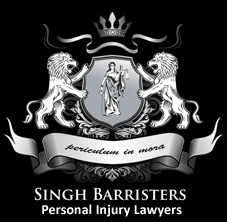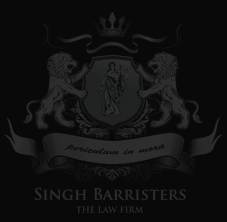| Toll Free : 1844 495 7333(injury hotline- new cases only) | |
| Text a Personal Injury Lawyer 24/7 and get instant help.TM (416 931 5015) | |
| Head Office : 905 495 7333 |
Hamilton Personal Injury Lawyers: Time Limits for Claiming Benefits or Filing Lawsuits
November 2, 2017
When a motor-vehicle accident (MVA) occurs, there is utter chaos and confusion all round. Whether it’s a fender-bender or one that causes catastrophic damage and injuries, the people involved experience a mixture of emotions – fear, anxiety, “fight or flight” impulses, pain, grief, shock, confusion etc.
Obviously, the priority in such a situation would be to get emergency medical care to the injured. The police and traffic authorities have to be informed and finally, the insurance companies need to come into the picture, since they have to pick up the costs.
Accidents, as experienced Hamilton personal injury lawyers who regularly deal with such situations know, are rarely “accidental.” They are the result of someone’s fault or negligence, and sometimes ignorance or deliberate flouting of safety norms. The injured are entitled to seek compensation for the various losses and injuries they have suffered and insurance companies usually are liable to make these compensation payments.
Seeking Compensation
Insurers, being for-profit enterprises, may not always act in good faith, they may dispute, deny or dismiss your claim on various technical grounds or attempt to minimize the nature and extent of your injuries and their client’s liability.
Ontario regulations mandate that any person injured in automobile accidents is entitled to claim statutory benefits from their own insurers. Additionally, victims can also file a personal injury suit against the at-fault party to claim damages.
Complex Issues and Procedures
When there is a dispute or the insurance company’s settlement is unsatisfactory, settlement becomes difficult. In such cases, a personal injury suit has to be filed. However, a vast majority of personal injury claims are settled out of court, without having to go through a trial process. Often, a notification of the intention to sue is given to expedite the negotiation process and show that you are indeed serious about achieving the desired compensation.
Negotiations and/or arbitration are first undertaken, which involve both sides presenting their side of the argument. Personal injury claims hinge on the concept of “negligence” hence,
- proof of fault/negligence
- establishment of liability
- proof of injury
- impact of such injury on the victim’s life
have to be clearly demonstrated for a claim to be successful.
Time Limitations
One of the major challenges in ensuring that a claim goes through smoothly is keeping within the prescribed time limits for filing. Ontario has strict rules governing the process and if notice of intention to sue is not provided to the at-fault party within the limits, you stand to lose your right to sue.
Ontario regulations include:
- Information about the accident must be provided to your insurance company within 7 days
- Accident benefits application must be completed within 30 days
- If benefits are denied, appeals/mediation/arbitration/suit has to be filed within two years
- Notice to sue the at-fault driver must be given within 120 days
- There is a two-year limit within which you have time to launch a suit
These and some other conditions have to be strictly followed. There are other complex medical, legal and insurance issues involved and an experienced Hamilton personal injury lawyer can provide the right assistance.
Hamilton Personal Injury Lawyers: Time Limits for Claiming Benefits or Filing Lawsuits
November 2, 2017
When a motor-vehicle accident (MVA) occurs, there is utter chaos and confusion all round. Whether it’s a fender-bender or one that causes catastrophic damage and injuries, the people involved experience a mixture of emotions – fear, anxiety, “fight or flight” impulses, pain, grief, shock, confusion etc.
Obviously, the priority in such a situation would be to get emergency medical care to the injured. The police and traffic authorities have to be informed and finally, the insurance companies need to come into the picture, since they have to pick up the costs.
Accidents, as experienced Hamilton personal injury lawyers who regularly deal with such situations know, are rarely “accidental.” They are the result of someone’s fault or negligence, and sometimes ignorance or deliberate flouting of safety norms. The injured are entitled to seek compensation for the various losses and injuries they have suffered and insurance companies usually are liable to make these compensation payments.
Seeking Compensation
Insurers, being for-profit enterprises, may not always act in good faith, they may dispute, deny or dismiss your claim on various technical grounds or attempt to minimize the nature and extent of your injuries and their client’s liability.
Ontario regulations mandate that any person injured in automobile accidents is entitled to claim statutory benefits from their own insurers. Additionally, victims can also file a personal injury suit against the at-fault party to claim damages.
Complex Issues and Procedures
When there is a dispute or the insurance company’s settlement is unsatisfactory, settlement becomes difficult. In such cases, a personal injury suit has to be filed. However, a vast majority of personal injury claims are settled out of court, without having to go through a trial process. Often, a notification of the intention to sue is given to expedite the negotiation process and show that you are indeed serious about achieving the desired compensation.
Negotiations and/or arbitration are first undertaken, which involve both sides presenting their side of the argument. Personal injury claims hinge on the concept of “negligence” hence,
- proof of fault/negligence
- establishment of liability
- proof of injury
- impact of such injury on the victim’s life
have to be clearly demonstrated for a claim to be successful.
Time Limitations
One of the major challenges in ensuring that a claim goes through smoothly is keeping within the prescribed time limits for filing. Ontario has strict rules governing the process and if notice of intention to sue is not provided to the at-fault party within the limits, you stand to lose your right to sue.
Ontario regulations include:
- Information about the accident must be provided to your insurance company within 7 days
- Accident benefits application must be completed within 30 days
- If benefits are denied, appeals/mediation/arbitration/suit has to be filed within two years
- Notice to sue the at-fault driver must be given within 120 days
- There is a two-year limit within which you have time to launch a suit
These and some other conditions have to be strictly followed. There are other complex medical, legal and insurance issues involved and an experienced Hamilton personal injury lawyer can provide the right assistance.









